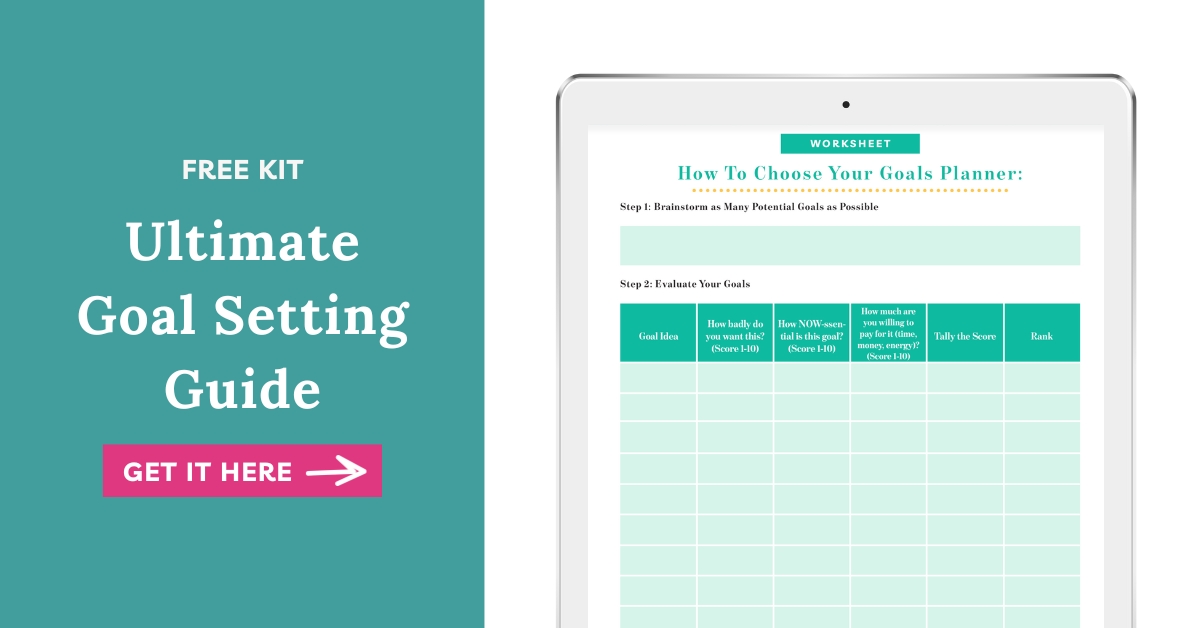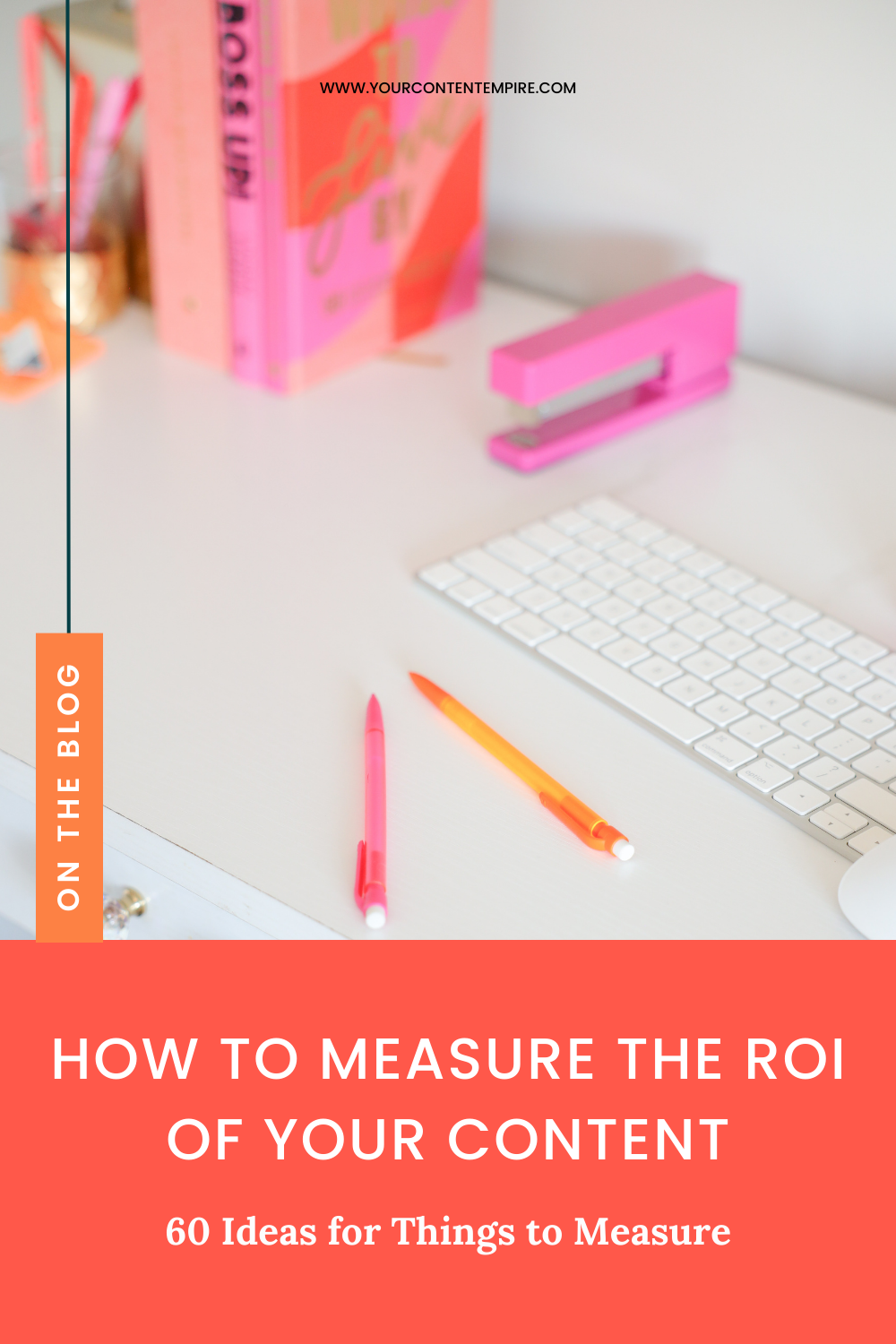Hold on to your planners, friends, because New Years is on the horizon, and people are about to go gaga for goal setting and planners!
I’m super excited for 2021 because I think 2020 has truly been a lesson in goal setting and making sure that the goals we set are ACTUALLY a priority for us. And if this year has taught us anything, it’s that we need to maintain flexibility when it comes to our goals.
It’s important to stay focused on the outcome while allowing flexibility on the methods you’ll use to get there.
I know I’m taking these 2020 lessons into account when it comes to goal setting for 2021.
Here’s my complete goal setting process that you can take and tweak to make your own!
But First: A Word On What To Do If You Have Too Many Goals
I’m such a big goal setter that sometimes I’ll put everything down and then it comes back to bite me when I’m actually trying to accomplish all those goals. Sure, it’s great to have a lot of goals, but that doesn’t necessarily mean you’re going to have time to work on them all at the same time.
You can go a lot further faster if you focus on a handful of goals rather than trying to work on 20 different things at once.
This doesn’t mean that you’re never going to get to those goals at the bottom of the list, but they’re probably not where you’re going to be putting all your energy in the beginning.
I’ve been known to say: Start Less, Finish More. And this is the reason!
If you are someone who maybe has too many goals too, try using the parking lot concept! It’s an invaluable tool where you can put ideas and goals for later so that you’re not getting rid of them but you’re parking them so that they don’t distract you.
This might mean keeping them in a folder or in your planner so that you can come back and revisit them later when you have the space to add more goals to your list.
On The Flipside: What To Do When You Can’t Think of Any Goals
On the other side of having too many goals, I’ve also been in conversations with clients when they have a difficult time figuring out what they actually want to focus on for the coming year. They either feel like they’ve done it all before and it’s all starting to feel repetitive, or they haven’t fully articulated their business’ vision and they’re plagued by shoulds.
To dig deeper into how to shake off these shoulds, definitely take a peek at my blog post on it!
I usually tell people who are struggling to come up with goals for their business to go back to the beginning of WHY they started this business in the first place:
- What was the motivation behind this business?
- What did you hope to achieve?
- What lifestyle were you dreaming of?
By going back to the beginning, it helps us think of some of the goals that we had then that we may need to bring back to the forefront.
I like to get away from my house and desk when doing this goal setting, which I understand can be hard during this pandemic, but you can always have a mini staycation!
For me, I get away every November during my business’ anniversary so that I can get into that business dreaming state and get away from everyday life distractions.
It’s also important to ‘borrow before you buy’.
Try on different goals and see how they feel before fully committing to following them through. You might give yourself some space to really think through a goal and explore whether or not it’s right for you and your business and if it’s aligned with where you’re going.
Next FAQ: Should Your Goals Be Big or Small?
This is the ultimate trick question about goal setting. Should they be big goals or small goals? I’m a fan of both!
I think that you should set big goals so that you aspire to reach bigger things. They’re going to help you stay inspired and motivated towards something that truly matters in your business and life.
But you can also TURN those big goals into small goals. You’re not going to hit 10,000 subscribers on your email list right away, but you are going to get there by hitting first a goal of 500, then 1000, then 1500 and so on.
I almost think of the big goals as like my overall vision, and the small goals as my action items and achievable targets. If you stack up enough of those smaller goals, you’re going to hit that big goal in no time. It becomes inevitable this way!
Flexible or firm goals is probably the ultimate lesson of 2020.
A lot of us had our goals turned upside down this year, so like I mentioned before, you want to stay firm in your vision, especially if it’s around things you’re truly passionate about, but you should stay flexible in the methodology and process you’re using to get there.
Okay, let’s get down to the nitty gritty with my complete goal setting process:
Step 1: Cast a wide net
This is what I refer to as the dream space, where you’re just getting down as MANY ideas as possible.
Don’t edit yourself here! Don’t think about what’s possible or impossible, or what you do or don’t have time for, just step into a dream goal space and write down everything that comes to mind.
The Start, Stop, More, Less Approach to Brainstorming
A way to get started is through the stop, start, more or less approach, where you think about:
- What is it I want to start?
- What do I want to stop?
- What do I want to do more of?
- What do I want to do less off?
Use these questions to get you going, setting about five minutes per question just to come up with as many ideas as possible.
Break down your business into areas
Next, I’d break your business down into different departments, even if you’re a solopreneur or have a small team.
Start thinking of your business in terms of different departments, like marketing, systems, admin, collaboration and partnerships, team members. From there, you can use each one of these different areas to come up with your goals.
Again, stick to that start, stop, more or less approach, putting five minutes on the clock and brainstorming as many goals as possible around these different departments of your business.
Go back to the start
Take time to revisit why you started your business in the first place, getting back that beginner motivation and bravery it took to initially start your business. Think about some of the dreams you had back then, and the vision you had created for your business.
Where have you gone away from that vision, and how can you come back to it?
Where can you start realigning yourself with that initial purpose?
By the end, you should have at least 20 to 25 goals written down which can be great fits to tackle next year.
Step 2: Evaluate Your Goals
If you’re having trouble deciding on your goals, then definitely go and download my How To Choose Your Goals Planner:
First, I want you to write down all of the ideas you came up within a grid and give them a score from 1 to 10 on three different criteria:
1) How badly do I want this?
2) How NOW-ssential is it? How immediate this goal feels
3) How much am I willing to pay for it? This can be money, but also energy and time
Once you rank your ideas, tally them up, giving every idea you had a score, and then go and rank them in order of highest to lowest. This should help you see what goals you want to move forward with.
Step 3: Decide On Your Top Goals
Now it’s time to figure out your top goals and give things a place in your yearly calendar. To do this, I break my year up into quarters, looking at which goals I want to tackle in quarters one, two, three and four. I don’t recommend having more than five goals in a quarter at a time, and even try to keep it down to three so that you’re not focused on too much at once.
For each of the goals you put down, ask yourself the following questions to get clear on the ‘why’:
- Why do you actually want this?
- What would this mean for your business?
- What would this mean for your life?
- What am I exchanging for this result, effort or monetarily?
Then I want you to get clear on what success looks like once these goals are accomplished:
Then go back to your four quarters and give each goal a time slot on when you’re going to work on and complete it. Is this a quarter only goal or something you’re going to be working on all year?
I want you to then give it the project plan treatment. As you know, any project isn’t going to come true unless we actually put action steps in to follow. The action steps are what actually lead us to complete that dream goal.
Break out the milestones along the path to finishing that goal, and then for each of those milestones, decide what the action steps are for reaching that goal.
Step 4: Set Yourself Up To Work The Plan
It’s time to actually make it possible to WORK the plan you’ve created by putting your project plans into a task management tool. Whether you’re an Asana person like me, a Trello person, or a classic paper and pen person, put those action lists into your system.
You don’t need to necessarily assign specific dates at this point, but I do want you to schedule some monthly and quarterly check-ins for yourself, and specifically go and create a monthly action plan for your goals.
You can do this with my Monthly Action Plan Generator, which will help you turn your actions into a plan that actually WORKS with the time you have available. That monthly action plan is something you can review quarterly, to see if any upcoming months need adjusting.
We do these quarterly check-ins to review our progress towards our goals, seeing if the action plan needs to shift.
What’s the biggest thing that you’re excited to work towards?







